OUTDOOR SCREEN PROGRAM: SIGNAL ALUMNI 2022
Header image: Amy Manson and Fetle Wondimu, With Love, 2022
SIGNAL is the City of Melbourne’s creative arts studio for young people.
At SIGNAL, 14-25 year olds work alongside professional artists in a collaborative way, through multi-artform workshops and mentoring.
The program provides emerging and established artists with opportunities and spaces for exploration, creation and presentation.
SCREEN X SOUND Commissions
In April 2022 SIGNAL put out the call for proposals from young screen and sound artists to develop new works for digital presentation and form new collaborations online.
Throughout the 12 week program, young artists received technical and creative support through regular online development workshops led by sound artist Ryan Granger and video artist Freya Pitt. Each artist also received one-on-one mentoring from established artists and industry professionals, Devika Bilimoria, Corinna Berndt, Bridget Chapell, Yeo Choong, Fayen Devie, Eliza Hutchison, Aaron Rees, and Thembi Soddell.
Over the first 6 weeks, the commissioned artists focused on realising their individual proposals. In the second half of the program, each sound artist was matched with a screen artist and they worked together to create a second, audio-visual artwork. In just 6 short weeks, they were challenged to develop a brand new collaborative relationship, negotiate a shared creative process, and realise a new work from concept to delivery!
Amy Manson, This Bug is Not a Bug, 2022, 2’48”
Sofie McClure, Look… the grass is singing, 2022, 4’14”
Carmen Yih, 一 层一层/Layer by Layer, 2022, 3’58”
Rebecca Bracewell and Sofie McClure, Fugue, 2022, 10’00”
Monique Gawne and Carmen Yih, 開飯喇 /緊呷 (hoi faan laa /gin jia), 2022, 6’29”
April Guest and Lǐ Xīng Yǔ (Echo Li), Disconnection Connects, 2022, 4’59”
Fetle Wondimu Nega and Amy Manson, With Love, 2022, 1’36”
Amy Manson, This Bug is Not a Bug
This Bug is Not a Bug is an experimental work exploring the tension between the natural world as embodied by insect samples and the gaze of technology. The film is a stop motion sequence of images shot through a microscope objective mounted to a camera. Due to the objective’s extremely short depth of field, creating this work was a labour almost machine-like, each frame made up of 30 – 70 focused stacked images. The repetitive and tedious nature of capturing each image, accumulating and compiling masses of data, then running it all through a focus stacking algorithm, mirrors the way much modern scientific research is conducted, with computers and predominantly automated. Confronted by vibrant colours, alien seeming formations and striking patterns, elements of nature previously inconspicuous are rendered unexpectedly awe inspiring, grotesque and beautiful, but ultimately unrecognisable. This Bug is Not a Bug speaks to the way in which technology takes nature out of context, seeing only the useful parts while obscuring the importance of the interrelated whole.
Sofie McClure, Look… the grass is singing
Look… the grass is singing is a self-reflexive investigation into the relationship between the film director, the camera, and the viewer. The film playfully investigates the position of the director through my delivery of choral instructions to a field of grass. At the beginning of the video work, the viewer is invited to see the movements and sounds of the grass as responding to my commands. However, as the camera shutter opens and closes, the viewer’s capacity to ‘see’ becomes increasingly obstructed, the video image resembling an eye half closed. Immersing the camera deep within the grass and allowing the sound of the grass to guide the camera’s movements, the work seeks to destabilise the position of the director as someone commanding the visual field. As my choral instructions dissolve into broken vowels and the video image disintegrates, the grass is finally heard. Through this work, I mediate on how my environment is always leading the camera ‘astray’, redirecting my own gaze and in turn, the direction of my filmmaking practise.
Carmen Yih, 一 层一层/Layer by Layer
I am a product of the millions of coincidences, decisions and sacrifices my predecessors have made. 一 层一层/Layer by Layer is a filmic homage to the forgone artistic dreams of my maternal lineage. Growing up, my mother and grandmother would often reminisce about the artistic ambitions they had in their youth - teaching me my first dance steps and showing me their old film footage from their performances. I struggled to understand why they abandoned their artistic careers so early on, letting me only live vicariously in these distant alternate lives. As I grew older, I became soberly aware of all the sacrificed dreams of my predecessors. Each choice - to sacrifice, to abandon, to forgo, has enabled me to reach this point. As I pursue my artistic ambitions, I experience these echoes of forgone dreams layered upon me.
Rebecca Bracewell and Sofie McClure, Fugue
Fugue unfolds around a series of poetic exchanges in which we attempt to capture something inherently fleeting; a rainbow. Much like a musical fugue, the film has a polyphonic texture, stitching together letters, imagery, and sound. The letters were sent partially ‘incomplete’, leaving the other artist to respond either through sound or imagery. Led by our exploration of colour through memory, emotion, and perception, Fugue seeks to draw the viewer into a place of sensory curiosity. The desire to come closer to colour runs throughout the entire piece – to touch colour, to smell colour. Yet colour always appears to escape representation; imagery flickers across the screen and sound dissipates. Deriving from the Latin fuga (flight), ‘fugue’ shares an etymological root with the Latin words fugere and fugare, to flee and to chase. Revealing itself through light, colour resists being captured, it surrounds us and yet it always slips through our fingers. We reach for colour, in Goethe’s words, ‘not because it advances to us, but because it draws us after it’ (Theory of Colours, 1810).
Monique Gawne and Carmen Yih, 開飯喇 /緊呷 (hoi faan laa /gin jia)
開飯喇 /緊呷 (hoi faan laa /gin jia) is a collaborative video and performance work from artists Carmen Yih and Monique Gawne. Carmen and Monique both cook alone in public spaces - one at dawn and one at dusk, connected across distances through the ritual process of cooking meals close to their heart. What they are cooking is hidden from view, yet, they welcome you to cook with them. Monique and Carmen explore how food, cooking, and sharing a meal are all common ways of communicating love. 開飯喇 /緊呷 (hoi faan laa /gin jia) is also an homage to all the unspoken acts of love shown to them by their Asian family members. The work also explores the nuances of Asian-Australian identity. Cooking an Asian meal in public that is usually reserved for the private familial home references the need to consciously and observably practice aspects of our Asian culture in order to ‘keep our asianness alive.’ Monique and Carmen imbue deeply personal, emotional connections into the artwork and invite viewers to reflect on their own cultural identity and connection to food.
April Guest and Lǐ Xīng Yǔ (Echo Li), Disconnection Connects
This collaboration is a fusion between our own vulnerabilities and shared emotional struggles. Both of our solo works expressed personal sides to ourselves, and we used this idea as the catalyst for our collaboration. We created this work by sharing our own intimate poetry, videos, music and voice recordings with each other. From there we expanded upon it with our own ideas, experiences and interpretations. Without much verbal communication, by sharing each other’s work, we were both sensing each other’s vulnerabilities and able to converge on something we both resonated with. This connection of hearts vibrating together is our work. We both want to deliver a sentimentality of frustration, sadness, pain. We both created art while going through difficult periods of our lives. In our lowest moments, sometimes only thing you can do is move your hand or sing one note. But despite this, our desire to create and express is still there and it feels like there is some hope. Luckily, we are not alone in facing the baggage that weighs us down.
Fetle Wondimu Nega and Amy Manson, With Love
With Love is a short work exploring the reciprocal connection between sound and visuals. Heavy on bold patterns, punchy beats and moody vocals, the film progresses from dark to light, sparse to chaotically colourful, soulful to upbeat, reflecting our innate tendency to move towards hope, optimism and joy. We wanted to have fun with it, making something both emotionally resonant and technically explorative and experimental. Amy used strata cut animation, shaping clay into patterns layered within a log shaped sculpture. As the log is sliced the animation is created, each slice revealing a frame. As much as it takes a lot of thought and planning, the results are often unexpected and joyous. Reflective of the notion that as much as we can plan and stress and worry, life will always surprise us. In response to the dark and light stratacuts, Fetle produced a piece that transitions from moody to upbeat, expressing the sharp entrapment of self-criticism to the release of self-acceptance. She developed the sound through playful experimentation hoping to, within the process, let go of encroaching self-critique. She started by collecting samples reminiscent of the tactile nature of clay, eventually layering them with vocal chops from various unfinished songs and voice memos. Making something new, and in the process accepting materials that had once been thrown away.
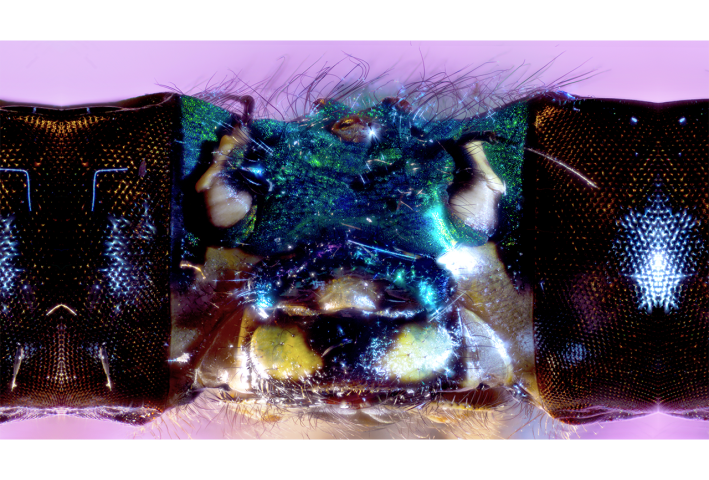
Amy Manson, This Bug is not a Bug, 2022
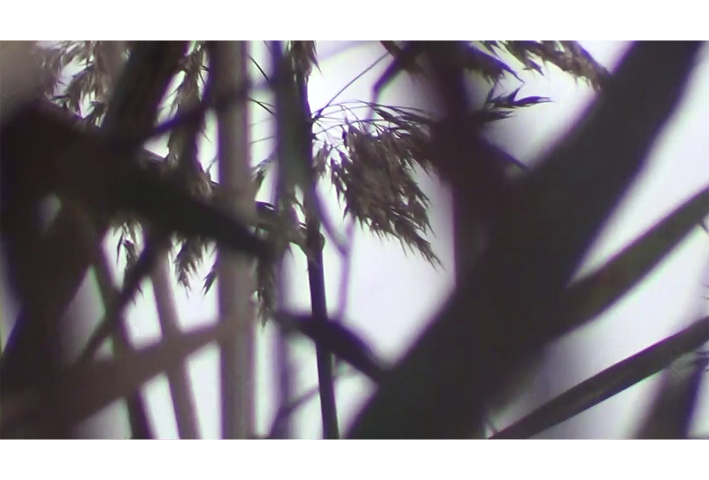
Sofie McClure, Look… the grass is singing, 2022
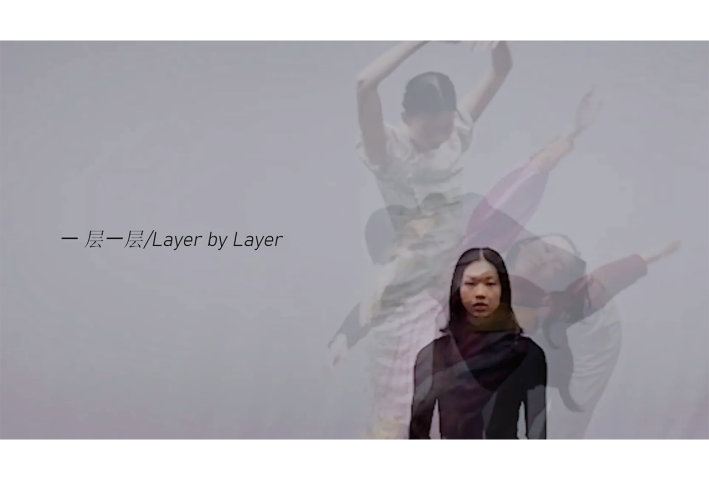
Carmen Yih, 一 层一层/Layer by Layer, 2022
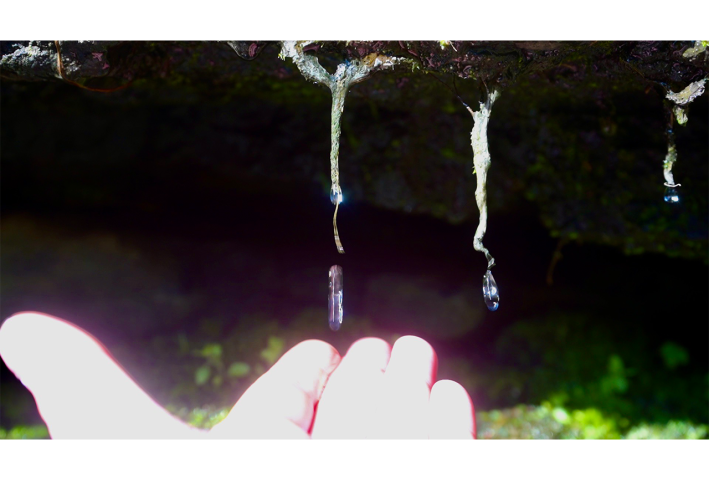
Rebecca Bracewell and Sofie McClure, Fugue, 2022
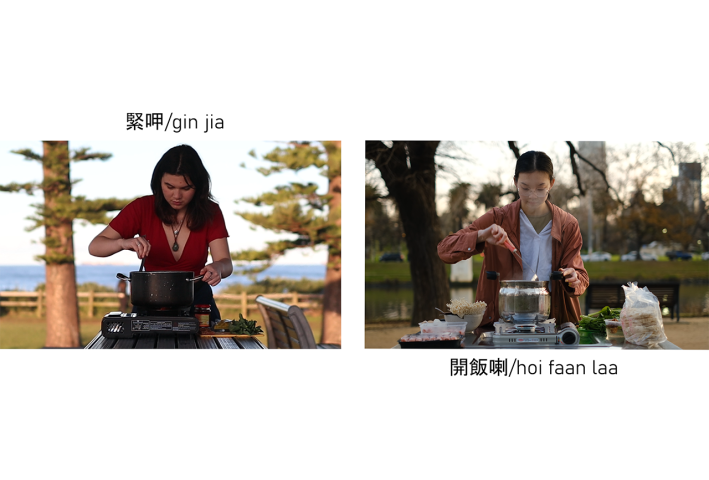
Monique Gawne and Carmen Yih, 開飯喇 /緊呷 (hoi faan laa /gin jia), 2022
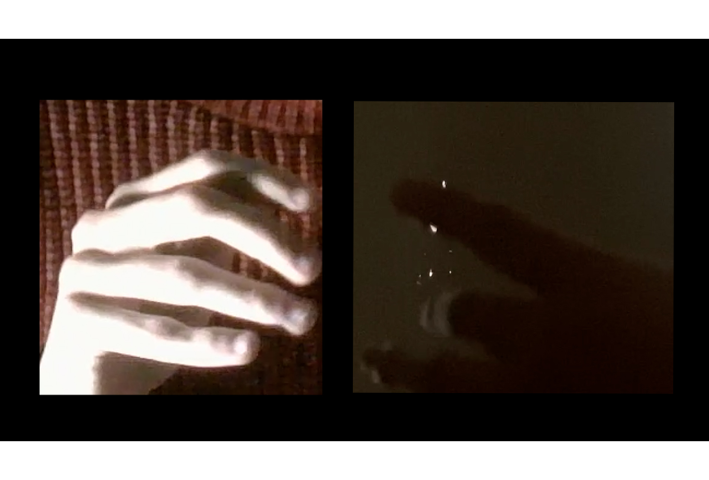
April Guest and Lǐ Xīng Yǔ (Echo Li), Disconnection Connects, 2022
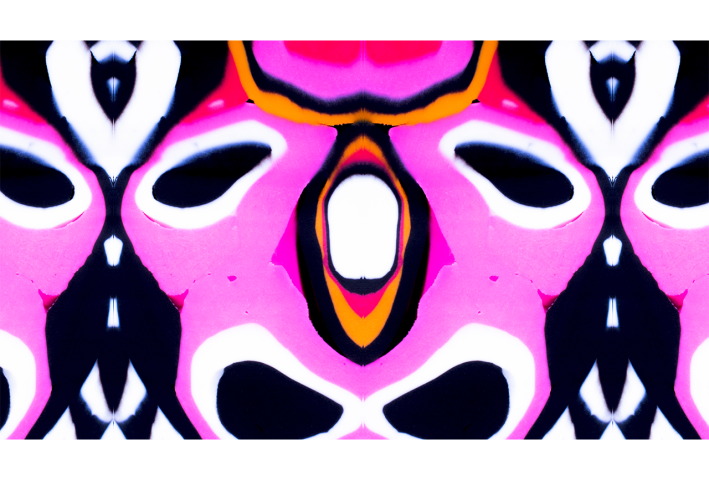
Fetle Wondimu Nega and Amy Manson, With Love, 2022
